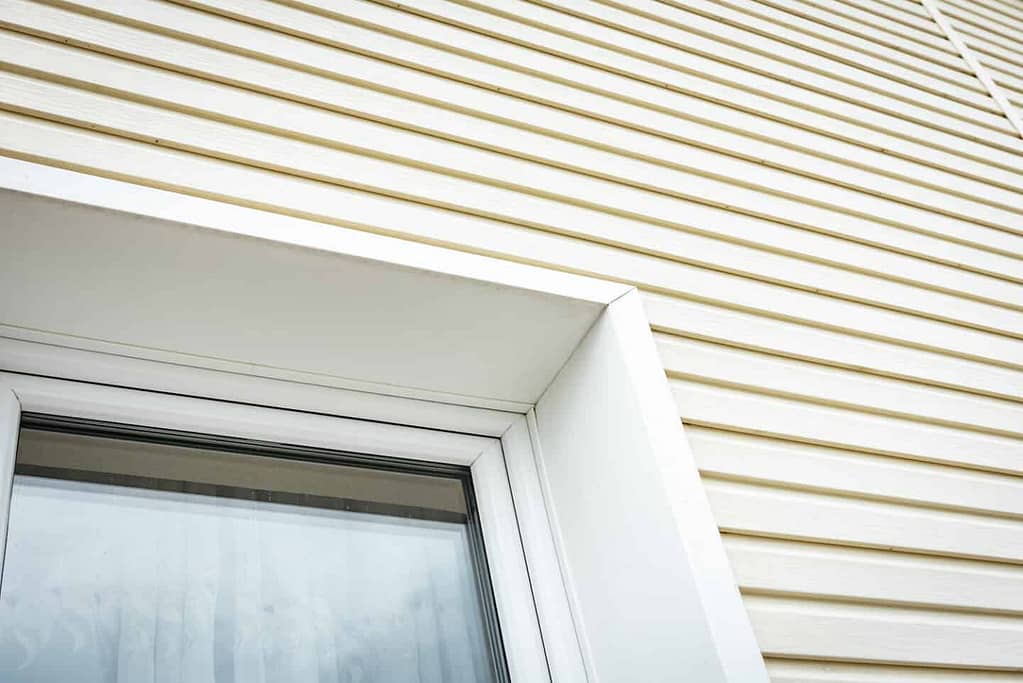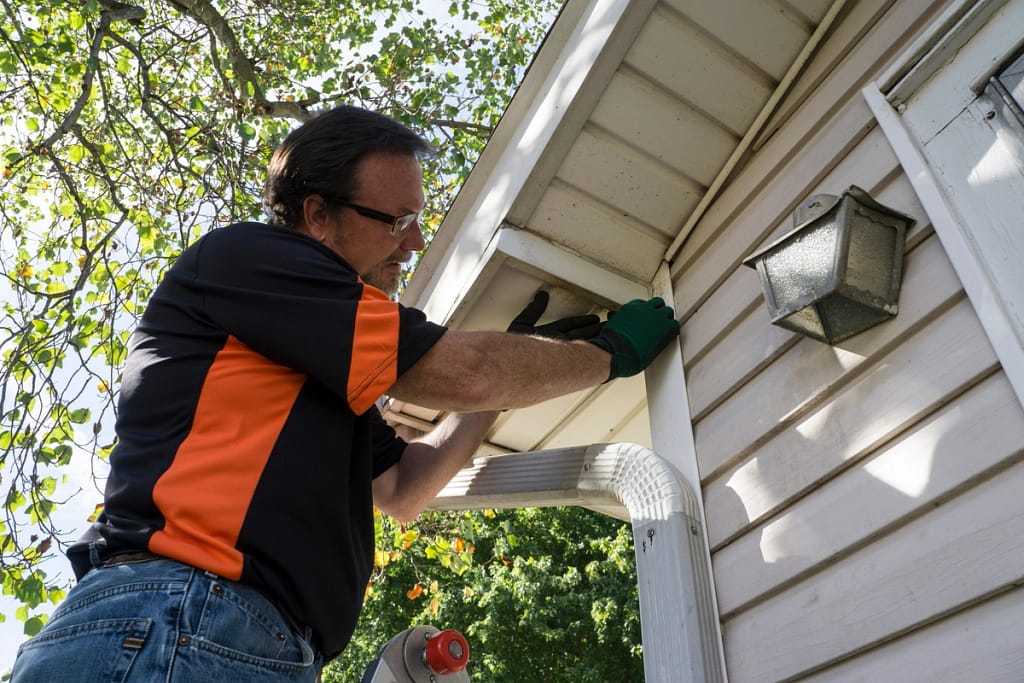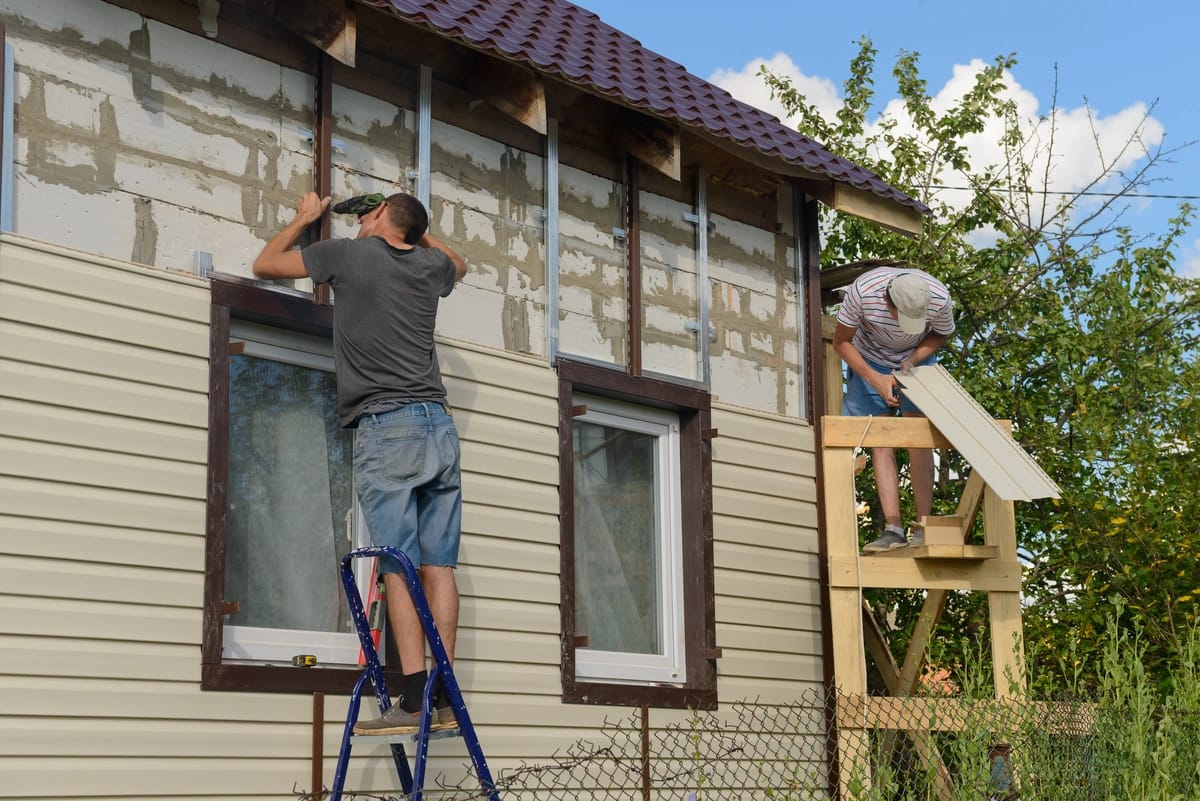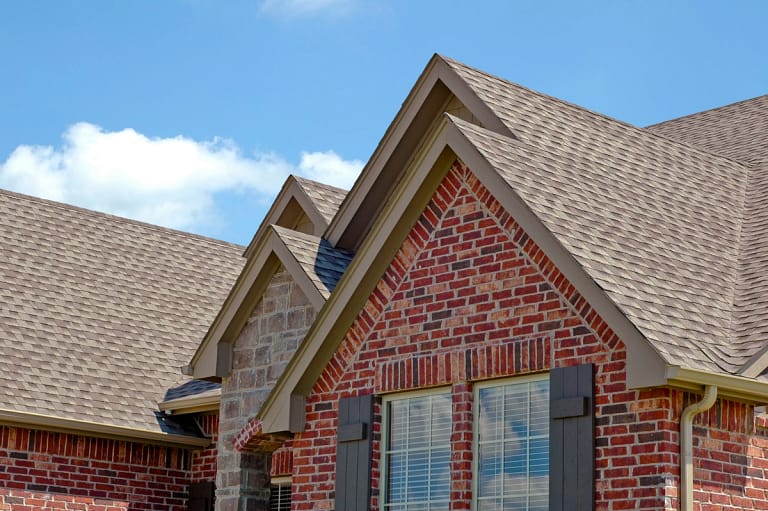It would be nice if every aspect of our home would last forever. No more repairs, no more calls to contractors, and no more expensive house projects…
Unfortunately, the hard truth is that homeownership comes with constant projects, including repairs to your siding. However, there is no need to get down about it! When it comes to keeping your vinyl siding functioning properly, you have lots of options.
Today, we’ll be breaking down:
- The benefits and drawbacks of vinyl siding
- How to maintain your siding
- DIY repair strategies
If you want to learn how to repair vinyl siding on your own, keep reading!
Pros and Cons of Vinyl Siding
Vinyl siding is one of the most popular siding materials available on the market, and with good reason. If you are considering adding vinyl siding or wondering if it is worth it to repair it, here are some factors to consider.
Pros ✅
- Affordability – Many people are drawn to vinyl siding because it is so inexpensive. Compared to high-end options like fiber cement and wood siding, vinyl siding fits more comfortably into an average budget.
- Versatility – Do you have a specific vision for how you want the exterior of your home to look? Vinyl siding comes in many different colors and finishes so that you can get a look that truly represents you.
- Low Maintenance – There is very little you need to do to take care of your vinyl siding. An annual cleaning with your garden hose should be enough to make it look brand new.

Cons ❌
- Durability – If you live in an area that has extreme weather conditions, vinyl siding may not be right for you. It does not stand up well to things like hail or water as well as other siding options on the market.
- Environmental Damage – In general, vinyl siding is not a very eco-friendly choice for your home. It cannot be recycled and is essentially made of plastic.
Signs You Need a Repair
Wondering whether your roof actually needs a repair? Here are some things to look out for.
- Holes – It may seem obvious, but if you see a hole in your siding, it is imperative that you fix it as soon as possible. A hole leaves space for water and pests to enter your home. Both can create large amounts of damage to the structure of your home.
- Cracks – Cracks may not look as serious as a hole in your siding, but they can still allow water to get inside your home. This can lead to mold growth and staining of your interior walls.
- Buckles and Warping – If you are noticing that your siding is buckling and warping, it could be due to moisture being trapped. We recommend looking closely to see if you can see any spots where water could be getting in.
Tools You’ll Need
Before you start your repairs, it is important to make sure you have the right tools that you need. Here is a comprehensive list of everything you need to get the job done.
- Caulk gun
- Caulk
- Utility knife
- Prybar
- Replacement siding
- Tape measure
- Tin snips
- Zip tool
- Safety gear (gloves, glasses)
- Vinyl siding patch
3 Ways to Repair Vinyl Siding
Ready to start your repairs? There are three main methods for fixing your vinyl siding.
1) Apply a Patch

If you have a large hole or crack in your siding, you may want to consider adding a patch. A patch will effectively keep out any moisture from the exterior of your home.
You’ll want to start by carefully cleaning the area of any dirt or debris. This will allow the caulk to stick more effectively. Next, measure the width of the hole or crack and cut the vinyl siding patch to match.
Place a small line of caulk on the back of the patch and around the hole. Carefully place the patch, and hold it in place for a few seconds until it seals. Once it has dried for 24 hours, you can remove the excess caulk and paint as needed.
2) Replace the Panel
If your siding panel has suffered extensive damage, you may need to replace the entire panel. You’ll want to remove the damaged vinyl siding panel with a zip tool. it should unhook the broken panels from the ones they are attached to.
You can then remove any screws or roofing nails that are holding the panel in place. This can be done with a hammer, a pry bar, or a drill. Once the panel is unattached, you can use it to help measure out the new piece of vinyl siding. Cut it to size, and install it to the wall with roofing nails.
Lastly, use the zip tool to connect the new panel with the other.
3) Fill the Holes or Cracks
For a small, quick fix, you can simply fill the holes or cracks in your wall. As with the other methods, you’ll want to start by clearing the area. After that, you can load your caulk gun and carefully fill the hole. Let it dry for 24 hours before removing the excess caulk with a scraper.
DIY Fix vs. Professional
How do you know when it is time to call in a professional versus when you can do the fix on your own? Well, the general rule of thumb is that if you do not feel confident, you should call on a professional.
A poor repair to your siding could result in larger problems down the line, including severe water damage and warping to the vinyl panels.
Get the Help You Need!
If you need help repairing your vinyl siding, then you need Best Exteriors! As the area’s leading siding professional, we can help answer all of your questions and get you the repair that you deserve. Contact us today to set up your free siding repair consultation!




